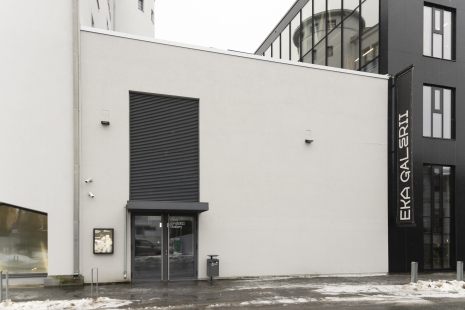The openness and liminality, being in between, on the threshold, of drawing contain the immense potential of transformation, the inherent non-being and hybridisation. Becoming something or somebody feels like flowing or writing: it is a place that requires common construction; it is a time which does not flow in a linear manner. Instead of being complete, there is becoming, the endless unrolling of materials and gestures, limitless potential. The technical processes of making art are very similar to the descriptions of the becoming of a Land(scape). When printing, painting, drawing or building installations, one is adding new layers of traces from materials, colours, (conceptual) motions and other means of depiction to a base structure. In printing, one uses different methods and mechanisms of transfer to create imagery. When drawing directly onto the canvas or on paper, a new layer is created with a pencil or the tip of a brush leaving its trace. Sometimes, however, the layers are also removed: erased, washed off with water or by tearing the textile into shreds.[2]
The exhibition displays the works of students, which were completed as part of the elective course. The aim of the course was a critical analysis or rethinking of contemporary drawing art by looking at various examples, reading texts and experimental tasks. The use of the layered work method applied in the art practice of the participants: the layered combination of experimental materials and forms in the art of drawing.
[1] Britta Benno, Saamisest maa(stiku)ks. Materjalid, teadus, utoopia. – Leida, 25.11.22 (https://leida.artun.ee/et/issues/tehnokriitika/saamisest-maa-stiku-ks-materjalid-teadus-utoopia vaadatud: 09.05.23).
[2] Britta Benno maa, Of Becoming a Land(Scape). Material, Science, Utopia. – Leida, 25.11.22 (https://leida.artun.ee/en/issues/technocriticism/of-becoming-a-land-scape-material-science-utopia accessed: 09.05.23).





